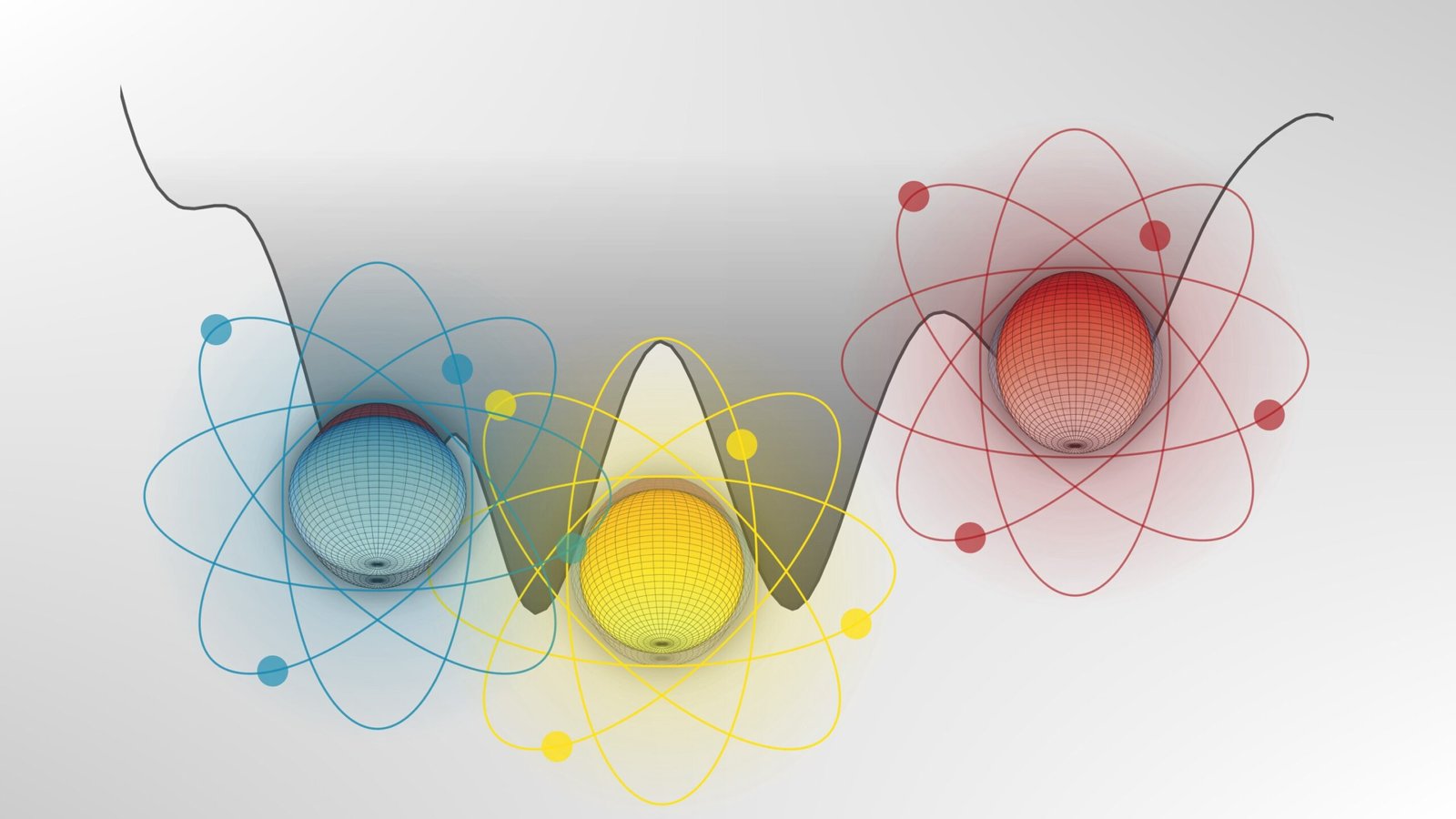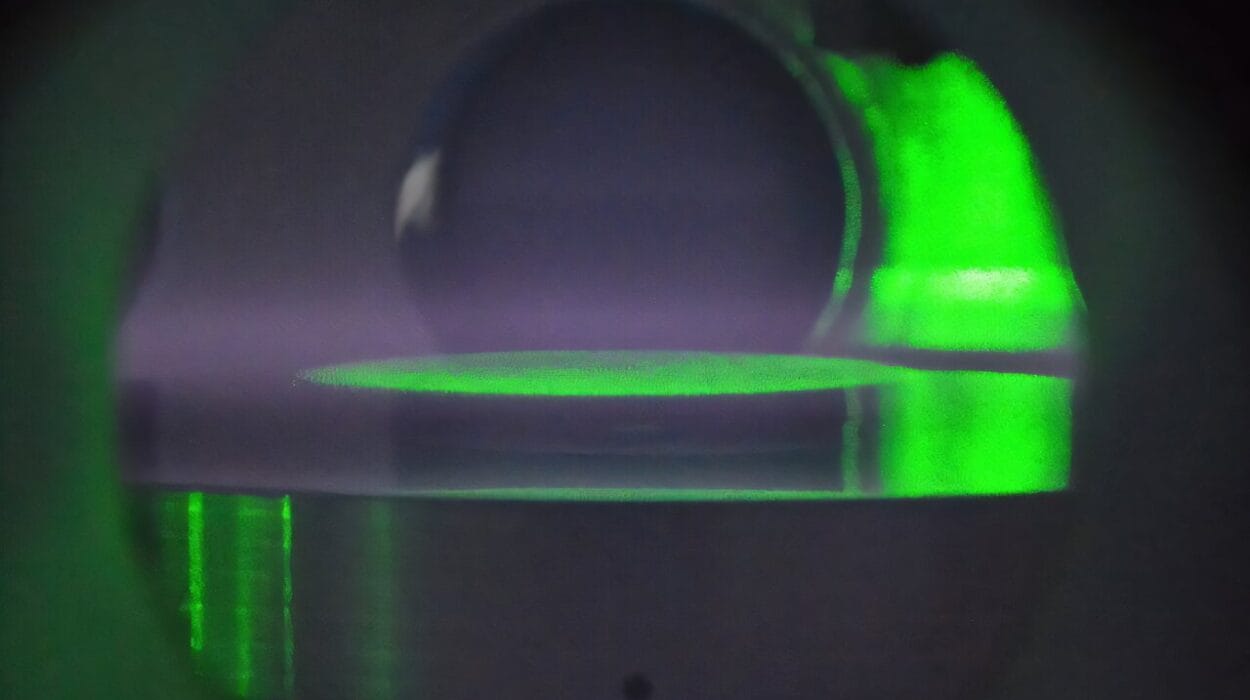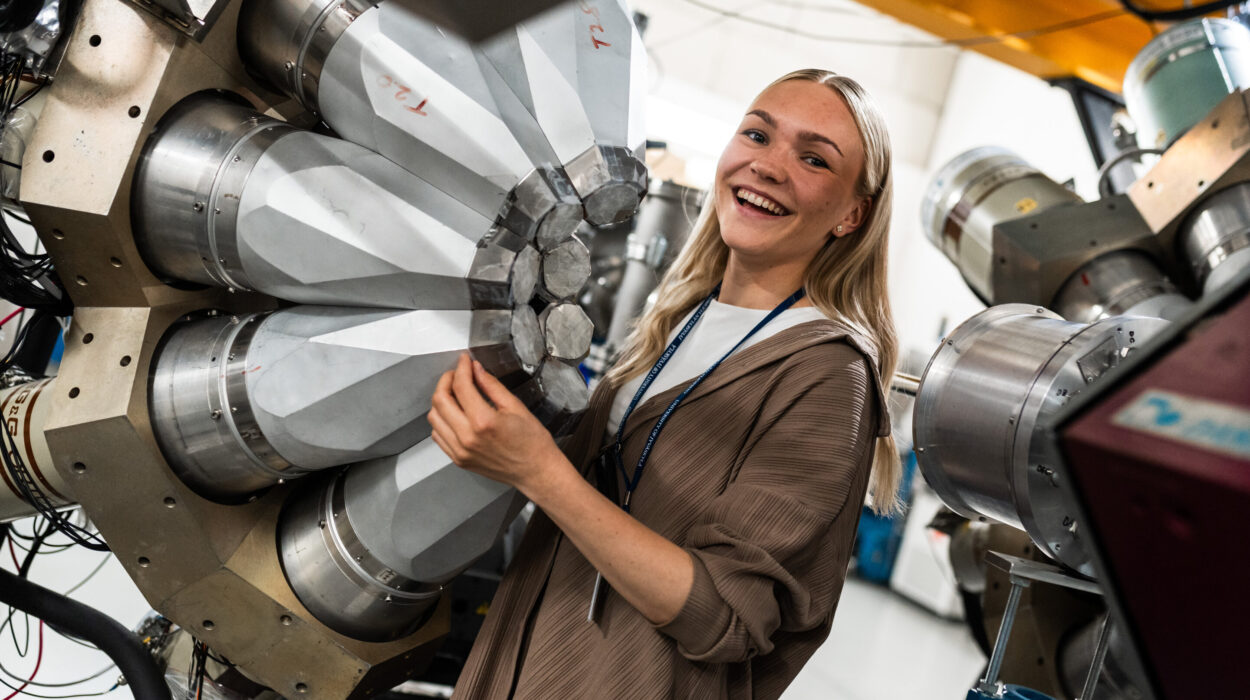A significant achievement has been made in the realm of nuclear physics with the direct observation of three distinct deformations within the atomic nucleus of lead-190 (190Pb). This groundbreaking discovery, which has been published in Communications Physics in January 2025, reveals the simultaneous existence of three different shapes—spherical, oblate, and prolate—in the nucleus of this isotope. These three shapes represent different configurations of the nucleus, each with unique physical characteristics that contribute to our understanding of nuclear structure and behavior. This research not only expands our knowledge of atomic structure but also presents new challenges for theoretical models in nuclear physics, highlighting the need for more accurate frameworks to describe the behavior of atomic nuclei.
Three Coexisting Shapes in the Nucleus
The study of shape coexistence within atomic nuclei has been a subject of fascination for over six decades, with previous research revealing that certain isotopes can exhibit multiple shapes within a single nucleus. However, the observation of three distinct deformations—spherical, oblate (resembling a flattened sphere, like a tomato), and prolate (similar to a stretched shape like a watermelon)—simultaneously near the ground state had never been directly confirmed. The study of these three configurations within 190Pb provides an extraordinary breakthrough in understanding the behavior of atomic nuclei in this state of shape coexistence.
The phenomenon of shape coexistence refers to the ability of a single atomic nucleus to adopt more than one geometric configuration depending on the energy state or excitation level. In the case of 190Pb, the research team was able to identify three configurations existing concurrently. The discovery adds another layer of complexity to our understanding of the nucleus, which has typically been described in much simpler terms.
For scientists working in the field of nuclear physics, 190Pb is now a centerpiece of study, serving as a prime example of the phenomenon of nuclear shape coexistence. What makes the discovery even more significant is that the three shapes are not simply theoretical ideas but have been observed through precise measurements and experiments.
Advancements in Experimental Techniques
The success of this groundbreaking discovery can be attributed to a combination of experimental techniques that allowed for the detailed study of 190Pb’s nuclear structure. The research team, comprising experts from the University of Jyväskylä (Finland) and the University of Liverpool (UK), employed three advanced experimental methods to probe the properties of the atomic nucleus of 190Pb.
The first technique involved measuring gamma (γ) rays and conversion electrons emitted immediately after the synthesis of the 190Pb isotope. These gamma rays carry valuable information about the de-excitation processes within the nucleus, providing scientists with data regarding the different configurations or shapes present.
The second technique focused on gamma rays emitted after the de-excitation of metastable nuclear states. Metastable states are higher-energy states of the nucleus that are relatively stable before eventually transitioning to lower energy levels. By studying these gamma rays, the researchers could uncover details about the dynamics of these higher-energy states and their respective nuclear shapes.
The third method employed by the research team utilized the Doppler effect to measure the lifetimes of excited nuclear states. This technique allowed the team to gain vital information on the collectivity of different configurations within the 190Pb nucleus. By observing how the excited states evolve over time, scientists were able to piece together a more detailed picture of the shape coexistence phenomenon at work in 190Pb.
The use of complementary experimental techniques was instrumental in revealing the different shapes within the nucleus. Senior Researcher Janne Pakarinen, the corresponding author of the study, commented on the significance of employing multiple methods: “Combining multiple experimental techniques is proving to be a powerful approach for exploring rare nuclear phenomena. Each method provides complementary information, allowing us to build a better picture of the configuration mixing in 190Pb.” This integrated approach was key to not only confirming the coexistence of these shapes but also enabling a more precise analysis of their interactions.
New Findings in the Excited States
The results of the study provided important insights into the different shape configurations of 190Pb. Specifically, the team confirmed that one of the excited bands of 190Pb exhibits a prolate shape—meaning it is elongated along one axis, much like a watermelon. Additionally, the lowest-lying band of the isotope, which was previously thought to be spherical, was found to have an oblate shape, characterized by its flattened appearance. This finding challenges earlier research, which had suggested that the ground state of 190Pb would adopt a spherical shape. Furthermore, the team identified a potential candidate for the first spherical excited state within the nucleus, providing new insights into the transitions that occur as the nucleus moves between different shapes during its excitation.
The ability to directly link gamma rays emitted during the nuclear relaxation process with specific shape configurations marks a significant milestone in the study of nuclear shape coexistence. It also highlights the complexities of nuclear interactions and the ways in which different shapes influence the behavior and energy states of an atomic nucleus.
Adrian Montes Plaza, a dual-doctorate researcher at the University of Liverpool and the University of Jyväskylä, who contributed significantly to the data analysis, expressed the significance of the findings: “190Pb is one of the most intriguing nuclei we have studied. Not only does it showcase multiple coexisting shapes, but our findings also suggest it could serve as a textbook example of nuclear states with wave functions significantly mixing contributions from each of these shapes.” This statement emphasizes the central role 190Pb will play in the study of nuclear physics in the years to come, as it could become a vital example for understanding how different shapes coexist and interact in atomic nuclei.
The Role of Rare Nuclei in Nuclear Theory
The study of rare isotopes like 190Pb is vital for advancing theoretical models in nuclear physics. Shape coexistence, particularly in isotopes like 190Pb, presents a significant challenge for existing nuclear theories. Accurately modeling the behavior of a nucleus that exhibits multiple shapes requires more sophisticated frameworks capable of describing the complex quantum effects that govern the interactions between nucleons (protons and neutrons) within the nucleus.
The research team’s results provide important data that will serve as a benchmark for refining theoretical models. With better data on shape coexistence and how different shapes influence the structure and behavior of atomic nuclei, scientists will be able to refine their understanding of nuclear forces, energy states, and the way nuclei transform in response to changes in excitation levels. These advancements are essential not only for nuclear physics but also for applications in fields such as nuclear energy, astrophysics, and medical research.
As the study of nuclear structure continues to progress, rare nuclei like 190Pb will provide the key to unlocking new theoretical insights. By observing these exotic isotopes and their unique properties, nuclear scientists will be better equipped to tackle some of the most complex questions in nuclear physics, ultimately refining our understanding of atomic interactions and the forces that govern the building blocks of matter.
Reference: Adrian Montes Plaza et al, Direct measurement of three different deformations near the ground state in an atomic nucleus, Communications Physics (2025). DOI: 10.1038/s42005-024-01928-8






